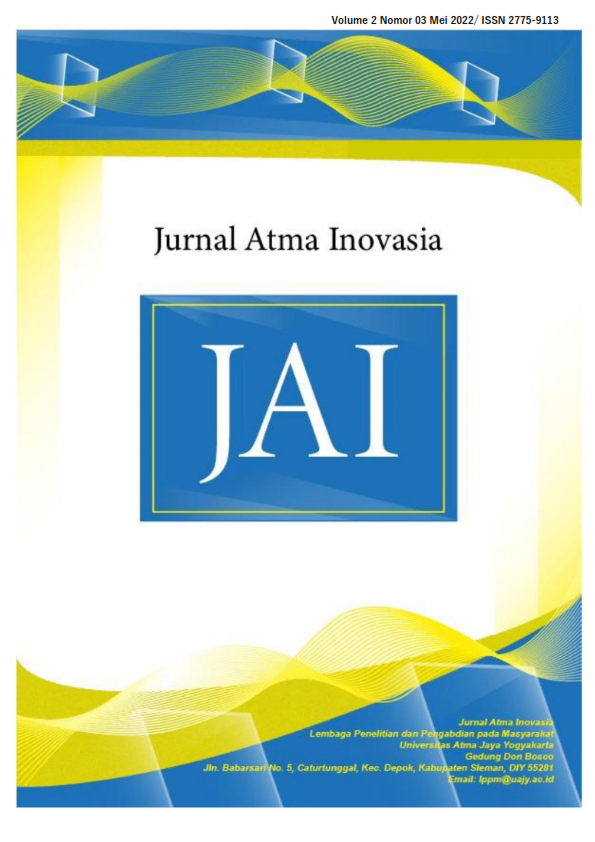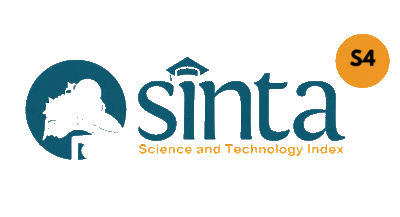Potensi Desa Pulutan
DOI:
https://doi.org/10.24002/jai.v2i3.4741Keywords:
agriculture, production, distributionAbstract
The group service program 52 Period 79 raised the potential of Pulutan Village and divided this potential into 3 aspects: (1) Agricultural Potential, (2) Processing Industry Potential, and (3) Natural Tourism Potential, as well as a pocketbook work program on the topic of Production and Cassava Chips Distribution. The results of the two programs are in the form of e-books and videos. The program objectives, such as the development of an urban farming system and the production and distribution of cassava chips, are in line with the vision and mission implemented by Pulutan Village. The mission of Pulutan Village is to create an orderly, cultured village towards a society that is competitive, advanced, independent, and prosperous. This program can increase the productivity of citizens, broaden residents' insights, and support the welfare of residents. The program is expected to inspire the people of Pulutan Village to develop the potential of their village. The method used in data search is through cultural studies via the internet and discussions with groups. For data processing, we carry out documentation from studies that we have obtained from the internet. The results of this service program are the development of urban farming techniques, development of agritourism, innovation of processed peanut products, and processed potato chips production and distribution. It is hoped that from this program, residents of Pulutan Village and readers will gain insight into the development of a village.
Keywords — agriculture, production, distribution
References
M. Baker, “Urban Agriculture is Part of the Locally Grown Food Movement,” Farmprogress.com, 2016. https://www.farmprogress.com/Marketing/What-Urban-Agriculture-and-Why-It-Important.
R. Suryani, Nurjasmi and R. Fitri, “Pemanfaatan lahan sempit perkotaan untuk kemandirian pangan keluarga,” J. Ilm. Respati, vol. 11, no. 2, pp. 93–102, 2020.
E. Chandra, “Aquaponik Solusi Bisnis Perikanan dan Pertanian Minim Lahan,” Unair, 2020. http://news.unair.ac.id/2020/01/03/aquaponik-solusi-bisnis-perikanan-dan-pertanian-minim-lahan/.
Y. Sastro, “Akuaponik: Budidaya tanaman terintegrasi dengan ikan, permasalahan keharaan dan strategi mengatasinya. Buletin Pertanian Perkotaan,” Bul. Pertan. Perkota., vol. 5, no. 1, pp. 33–42, 2015.
C. Smith and P. Jenner, “Educational tourism,” Anal. Travel Tour., vol. 3, pp. 60–75, 1997.
R. Priyanto, D. Syarifuddin, and S. Martina, “Perancangan model wisata edukasi di objek wisata Kampung Tulip,” J. Pegabdian Kpd. Masy., vol. 1, no. 1, pp. 32–28, 2018.
A. Soleh, “Strategi Pengembangan Potensi Desa,” J. Sungkai, vol. 5, no. 1, pp. 32–52, 2017.
M. Vahlefi, “Rancang Bangun Sistem Tanam dengan Metode Akuaponik Berbasis Mikrokontroler dan Sms (Short Message Service),” Polsri, 2015. http://eprints.polsri.ac.id/2754/3/BAB II.pdf.
Katadata, “Menawarkan Persawahan sebagai Atraksi Wisata,” Katadata, 2019. https://katadata.co.id/timpublikasikatadata/berita/5e9a4c4968b23/menawarkan-persawahan-sebagai-atraksi-wisata.
B. Swastha, Manajemen Pemasaran. Jakarta: Liberty, 2002.
Downloads
Published
Issue
Section
License
Copyright (c) 2022 Stephani Rangga Larasati

This work is licensed under a Creative Commons Attribution-ShareAlike 4.0 International License.










